#Primary sector
Text
Resilience and Rebuilding: MSMEs for sustainable development at the forefront of building back better and stronger from the impacts of the COVID-19 pandemic, climate crisis and conflicts
This year to mark the Micro-, Small, and Medium-sized Enterprises Day 2022, the International Trade Centre (ITC) marks the 5th anniversary of MSME Day, and small businesses are more than ever in need of support, as they navigate the impacts of the COVID pandemic, conflicts and the climate crisis. They are the hardest hit by these multiple shocks, and at the same time play a critical role in building back stronger.
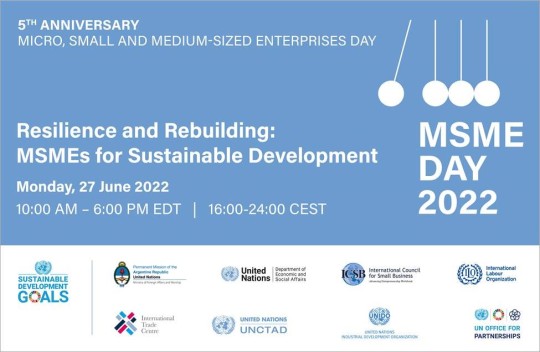
#small businesses#Micro enterprises#small enterprises#MSMEday#27 June#Medium sized-enterprises#Primary sector#Secondary sector#Tertiary sector#Economy#building back stronger#Resilience and Rebuilding
0 notes
Text
Enhancing agriculture productivity and food systems in general requires appropriate and affordable technology and innovations.
Enhancing agriculture productivity and food systems in general requires appropriate and affordable technology and innovations supported by sound policies and functioning institutions. Use of modern irrigation systems, mechanization of farming and reduction of post-harvest losses are high priorities for the continent.
Description: Policy formulation to integrate clean energy technology in agricultural development should be a key priority for a sound food system, and resilience development in Africa. In this context, the following streams are worth considering.
- Strengthen policies and institutions
- Enhance agricultural skills, education, and R&D
- Dissemination and adoption of technologies and innovations, including indigenous knowledge
- Promote investment in cost-effective and quality agricultural inputs
- Application of post-harvest loss management technologies
- Promote natural resource management and practices appropriate for African agricultural
- Disaster risk mitigation
#Human Capital Development#Climate#Energy#Food systems#Africa#Resilience Development#Primary sector#secondary sector of the economy
0 notes
Text
actually from now on if you haven't had at least a few first-hand conversations with farmers or hunters about their attitudes or practices then i don't care what you have to say about hunting or welfare in animal agriculture. those are my new standards.
#fucking exhausted#how many degrees of separation are there between you and anyone in the primary sector challenge
11 notes
·
View notes
Text
Meant to be going to bed after washing up a few bits and pieces. Drew this instead...

Yes, this is why I write fic, rather than draw fan art. XD
#life#rl#mama post#charlie's been having trouble at school with a couple of boys#one's backed off since the head of the primary sector got involved but the other is an arrogant little so-and-so and is still going#he's been putting her off swimming (telling her if she jumps into the pool she'd die. shit like that)#and this evening she was there saying she really enjoys swimming but doesn't want to do it if he's there#so its into school tomorrow to make sure the teacher tells the swimming teacher to be aware of the little dweeb#but for now i clean water bottles before bed
4 notes
·
View notes
Text
i love having a jester-y self insert i finally have someone to associate all my clown tunes with :]
#lem text#*<}:•] <- me. by the way#not that i know that many clown songs. but well. you get the idea#‘wall market doesn’t have any clowns or jesters’ well it SHOULD. n thanks to me it DOES now#itz funny i made chrome’s. primary location wall market when both me and him would hate that place#i’m not sure where he actually lives though.. i guess just sector 5 <3 whichhh. means that he would naturally meet AER.ITH#OOH….. THEY CAN BE FRIENDS BEFORE THE PLOTLINE STARTS….#COOL IM HAVING IDEAS NOW. THATS AWESOME
3 notes
·
View notes
Text
Unlock unrivaled learning opportunities at Blue Bird High School in Panchkula. Our optimal student-teacher ratio ensures that every student receives personalized attention and support, leading to a tailored education that fosters growth and success at every step.
#best cbse school in panchkula#best kindergarten school in panchkula#cbse school in panchkula#best cbse affiliated school in panchkula#top cbse school near me#cbse school near me#best cbse school in sector 16 panchkula#top school in sector 16 panchkula#cbse school admissions for primary classes near me#best teaching faculty in panchkula
1 note
·
View note
Text
Primary School in Noida - ASPAM Scottish
Welcome to Aspam School a vibrant and nurturing primary school in Noida where young minds blossom and thrive. Our dedicated educators are committed to providing a stimulating and supportive learning environment that inspires curiosity, creativity, and a love for learning.
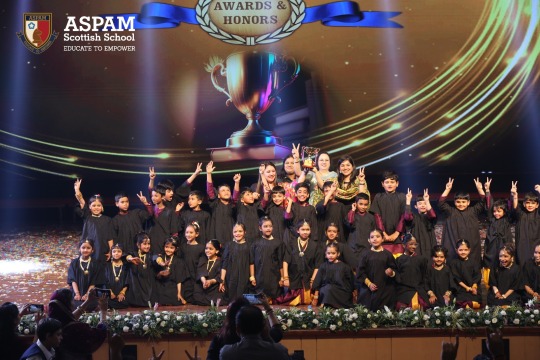
#cbse school in noida#schools in noida sector 62#school admission in noida#play school in noida#education#primary school in Noida#cbse schools in noida#best school in noida sector 62
0 notes
Text
Unveiling Cutting-Edge Insights from Primary Research in the Health Sector
In the rapidly evolving landscape of healthcare, staying at the forefront of innovation and understanding emerging trends is crucial for professionals and organizations alike. One of the most potent tools in achieving this is through primary research in the health sector. By conducting studies directly with patients, healthcare providers, and other stakeholders, researchers can uncover invaluable insights that shape the future of medicine, treatment protocols, and healthcare delivery. In this comprehensive guide, we delve into the significance of primary research in the health sector, its methodologies, and the groundbreaking insights it can reveal.
Understanding Primary Research in Healthcare
Primary research, also known as original research or primary data collection, involves gathering data directly from the source. In the context of healthcare, this often means conducting studies that involve direct interaction with patients, healthcare professionals, or healthcare systems. Unlike secondary research, which relies on existing data and literature, primary research generates new data, making it a potent tool for uncovering novel insights and addressing specific research questions.
Significance of Primary Research in Healthcare
Primary research plays a pivotal role in advancing medical knowledge and driving innovation in healthcare. Here’s why it’s so significant:
Uncovering New Discoveries: Primary research allows researchers to explore new hypotheses, identify patterns, and uncover previously unknown insights that can lead to breakthroughs in understanding diseases, treatments, and healthcare outcomes.
Customized Data Collection: Researchers can tailor data collection methods to suit their specific research objectives, ensuring that the information gathered is relevant and comprehensive.
Informing Evidence-Based Practice: By generating new evidence, primary research provides the foundation for evidence-based practice in healthcare. Clinicians and policymakers rely on this evidence to make informed decisions about patient care, treatment guidelines, and healthcare policies.
Addressing Gaps in Knowledge: Primary research helps fill gaps in existing knowledge by exploring areas that have not been extensively studied or understood. This is particularly important in niche fields or emerging areas of healthcare.
Driving Innovation and Improvement: Insights gained from primary research can inspire innovation in medical technologies, treatment modalities, and healthcare delivery models, ultimately leading to improved patient outcomes and experiences.
Methodologies in Primary Research
Primary research in the health sector employs various methodologies depending on the research question, objectives, and available resources. Some common methodologies include:
Surveys and Questionnaires: Surveys and questionnaires are widely used to gather data from a large number of participants. They can be administered in person, via mail, email, or online platforms and are useful for collecting both qualitative and quantitative data on a wide range of topics, including patient experiences, healthcare preferences, and treatment outcomes.
Interviews: In-depth interviews allow researchers to explore complex issues in greater detail by engaging directly with participants. Interviews can be structured, semi-structured, or unstructured, depending on the level of flexibility needed to probe specific topics of interest.
Focus Groups: Focus groups bring together a small group of participants to discuss specific topics or issues in a guided setting. They encourage interaction and collaboration among participants, allowing researchers to explore diverse perspectives and uncover underlying attitudes and beliefs.
Observational Studies: Observational studies involve observing participants in their natural environment to gather data on behaviors, interactions, and outcomes. This methodology is particularly useful for studying phenomena that cannot be manipulated or controlled in a laboratory setting.
Clinical Trials: Clinical trials are experimental studies that evaluate the efficacy and safety of new treatments, drugs, or interventions. They typically involve randomized control groups and rigorous protocols to ensure the validity and reliability of the findings.
Groundbreaking Insights from Primary Research
Primary research in the health sector has led to numerous groundbreaking insights that have transformed healthcare practice and policy. Here are just a few examples:
Personalized Medicine: By analyzing genetic data and biomarkers through primary research studies, researchers have made significant strides in personalized medicine, tailoring treatment approaches to individual patients based on their unique genetic makeup and characteristics.
Health Equity and Access: Primary research has shed light on disparities in healthcare access and outcomes among different demographic groups, informing efforts to address health equity and improve healthcare access for underserved populations
Patient-Centered Care: Through primary research on patient preferences, experiences, and outcomes, healthcare providers have embraced a patient-centered approach to care, emphasizing collaboration, communication, and shared decision-making between patients and providers.
Healthcare Technology: Primary research has fueled innovation in healthcare technology, leading to the development of telemedicine platforms, wearable devices, and digital health solutions that enhance remote monitoring, diagnosis, and treatment delivery.
Preventive Healthcare: Studies conducted through primary research have highlighted the importance of preventive healthcare measures, such as vaccinations, screenings, and lifestyle interventions, in reducing the burden of disease and improving population health outcomes.
Conclusion
Primary research in the health sector is a powerful tool for advancing medical knowledge, driving innovation, and improving healthcare outcomes. By engaging directly with patients, healthcare providers, and other stakeholders, researchers can uncover valuable insights that inform evidence-based practice, shape healthcare policies, and ultimately enhance the quality of care delivery. As the healthcare landscape continues to evolve, primary research will remain essential in addressing emerging challenges, driving progress, and ensuring the health and well-being of individuals and communities worldwide.
FAQs
What is primary research in the health sector?
Primary research in the health sector involves conducting studies directly with patients, healthcare professionals, or healthcare systems to gather new data and insights. It differs from secondary research, which relies on existing data and literature.
Why is primary research important in healthcare?
Primary research is crucial in healthcare for several reasons. It allows researchers to uncover new discoveries, inform evidence-based practice, address gaps in knowledge, drive innovation, and improve patient outcomes and experiences.
What are some common methodologies used in primary research in healthcare?
Common methodologies in primary research in healthcare include surveys and questionnaires, interviews, focus groups, observational studies, and clinical trials. These methodologies can be tailored to suit specific research objectives and questions.
How does primary research contribute to personalized medicine?
Primary research in healthcare, particularly through the analysis of genetic data and biomarkers, has advanced personalized medicine by tailoring treatment approaches to individual patients based on their unique characteristics and genetic makeup.
What insights has primary research provided in addressing health equity and access?
Primary research has shed light on disparities in healthcare access and outcomes among different demographic groups, informing efforts to address health equity and improve healthcare access for underserved populations.
#primary market research#primary research in health sector#primary market research services#primary research#primary research in healthcare
0 notes
Text
Nursery Admission in Dwarka: A Comprehensive Guide

Introduction to Nursery Admission in Dwarka
Nursery admission is a crucial step for both parents and children as it marks the beginning of a child's formal education journey. In Dwarka, a sub-city located in South-West Delhi, parents often find themselves overwhelmed with choices when it comes to selecting the right nursery for their little ones. This article aims to provide a comprehensive guide to nursery admission in Dwarka, helping parents navigate through the process with ease.
Importance of Choosing the Right Nursery
The nursery a child attends plays a significant role in their overall development. It sets the foundation for future learning experiences and shapes their social, emotional, and cognitive skills. Therefore, selecting the right nursery is crucial for ensuring a positive start to a child's educational journey.
Criteria for Nursery Admission
Age Criteria
Most nursery schools in Dwarka have a minimum age requirement for admission. Parents need to ensure that their child meets the age criteria specified by the school.
Documentation Requirements
During the admission process, parents are usually required to submit various documents such as the child's birth certificate, proof of residence, and immunization records.
Admission Process
The admission process typically involves filling out an application form, attending an interaction session or interview, and sometimes appearing for an entrance test, depending on the school's policies.
Popular Nursery Schools in Dwarka
Dwarka boasts a plethora of nursery schools, each offering unique teaching methodologies and facilities. Some popular choices among parents include:
School A
Known for its child-centric approach to learning.
Emphasis on holistic development through play-based activities.
State-of-the-art facilities and experienced faculty members.
School B
Focused on fostering creativity and innovation.
Strong emphasis on extracurricular activities such as music, art, and sports.
Warm and nurturing environment conducive to learning.
School C
Well-established reputation for academic excellence.
Comprehensive curriculum tailored to meet the needs of diverse learners.
Robust infrastructure and modern teaching aids.
Factors to Consider When Choosing a Nursery
Location
Consider proximity to your home or workplace for convenience in daily commute.
Curriculum
Evaluate the curriculum offered by the nursery to ensure it aligns with your child's learning needs and preferences.
Facilities
Inspect the facilities available at the nursery, including classrooms, playgrounds, and safety measures.
Reputation
Research the reputation of the nursery within the community and read reviews from other parents to gauge satisfaction levels.
Tips for a Successful Nursery Admission Process
Start researching early to familiarize yourself with different nursery options in Dwarka.
Attend open houses or orientation sessions offered by nursery schools to get a firsthand experience.
Prepare all required documents in advance to streamline the admission process.
Be proactive in communicating with school authorities and addressing any concerns or queries.
Challenges Faced During Nursery Admission
Navigating the nursery admission process can be daunting for parents, especially with the increasing competition for limited seats. Common challenges include meeting admission deadlines, managing multiple applications, and dealing with rejection.
Testimonials from Parents
"We were impressed by the nurturing environment and dedicated faculty at School A. Our child has thrived academically and socially since joining." - Priya Sharma
"School C exceeded our expectations with its rigorous academic curriculum and emphasis on character development. Highly recommended!" - Rahul Singh
Conclusion
Choosing the right nursery for your child is a significant decision that requires careful consideration. By understanding the admission process, exploring different options, and seeking recommendations from other parents, you can ensure a smooth transition into nursery school for your little one. Visit for more about our services at https://agsdwarka.com/.
FAQs (Frequently Asked Questions)
What is the ideal age for nursery admission in Dwarka?
Nursery schools in Dwarka typically admit children between the ages of 3 to 4 years old.
Are there any entrance tests for nursery admission in Dwarka?
Some schools may conduct entrance tests to assess the child's readiness for nursery education, but it varies from school to school.
How can I improve my child's chances of getting into a preferred nursery school?
Researching early, preparing all necessary documents, and actively engaging with school authorities can improve your child's chances of admission.
What should I look for during a nursery school visit?
Pay attention to the school's facilities, teaching methodologies, and interaction between teachers and students during your visit.
What if my child doesn't get admitted to any nursery school in Dwarka? In case of rejection, explore alternative options such as nearby schools or reconsidering your application strategy.
#Top 10 CBSE school in Dwarka#Best Primary School in Dwarka#Best School of Dwarka#Nursery admission in Dwarka#Nursery admission Dwarka#Best CBSE School in Dwarka#Best School in Dwarka Sector 13#Top School in Delhi
0 notes
Text
Emphasizing the importance of collective efforts in shaping the landscape of education statistics - 2024 Conference on education data and statistics.
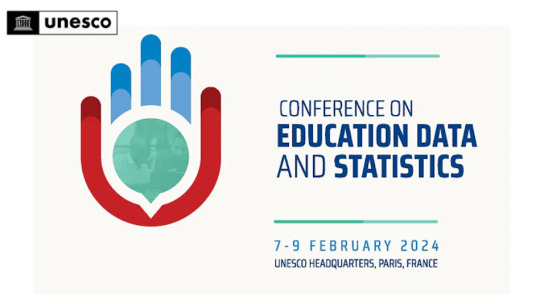
The UNESCO Conference on Education Data and Statistics is the first international event dedicated to establishing a collaborative platform for ongoing dialogue and mutual learning among education statisticians. This inaugural conference marks a significant milestone as the first-ever regular, open forum in the field of education statistics, where we delve into pressing questions regarding the present and future of internationally comparable data. Organized by the UNESCO Institute for Statistics (UIS), in collaboration with UNESCO's Education Sector and the Global Education Monitoring Report, this Conference aims to reaffirm the vital role of Member States as primary agents for coordinating education data and statistics. The conference also seeks to foster international statistical cooperation, emphasizing the importance of collective efforts in shaping the landscape of education statistics.
09:15 – 09:45 Opening of the Conference
09:45 – 10:30 Professor James Heckman, Henry Schultz Distinguished Service Professor of Economics & the Director of the Center for the Economics of Human Development, University of Chicago Winner of the Nobel Prize in Economics (2000)
10:30 – 11:30 High level panel
youtube
youtube
#SDG4#LearningNeverStops#Education#RightToEducation#UNESCO#UNESCO's Education Sector#UNESCO Institute for Statistics (UIS)#Global Education Monitoring Report#education statistics#education 2030#higher education#primary education#tertiary education
0 notes
Text
(Part 1) First Interuniversity Conference on Youth, Education and Research.
The conference format includes both conventional presentations and a discussion panel centered around the theme of education and youth. This panel comprises representatives from a wide range of countries and organizations. Its primary objective is to facilitate open dialogues on critical conference topics, summarizing perspectives expressed in the conventional presentations, and suggesting directions for future research and policy development.
The conference aims to explore the nexus between youth, education, and research. It is co-chaired by Ambassador and Permanent Representative, H.E. M.r Karlito Nunes of the Democratic Republic of Timor Leste, with Ambassador and Permanent Observer, H.E. M.r Daniel del Valle Blanco and Ambassador and Deputy Permanent Observer, HE. Dr. Otto von Feigenblatt of the International Youth Organization to the United Nations.
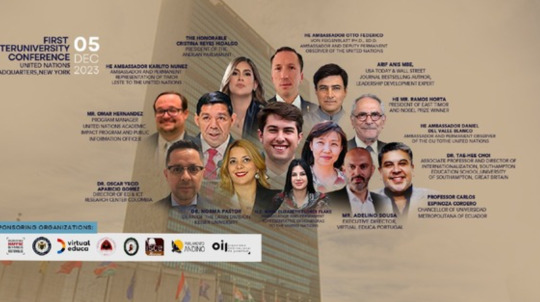
#Youth-Education-Research NEXUS#panel discussion#education sector#education professionals#academics#primary education#higher education#secondary education#Education 2030#Research#sdg4#education and youth#Conferences
0 notes
Text
Contribute to local and national economies and to sustaining livelihoods.
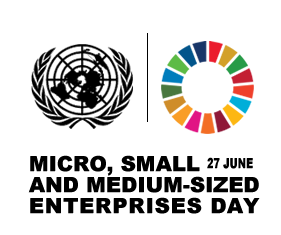
MSMEs account for 90% of businesses, 60 to 70% of employment and 50% of GDP worldwide. As the backbone of societies everywhere they contribute to local and national economies and to sustaining livelihoods, in particular among the working poor, women, youth, and groups in vulnerable situations.
#MSMEday#Micro enterprises#small enterprises#Medium-sized enterprises#27 June#Primary sector#secondary sector#Tertiary sector#start up
0 notes
Text
Gasgano, the Xexto from Troiken

STAR WARS EPISODE I: The Phantom Menace 00:59:23
#Star Wars#Episode I#The Phantom Menace#Tatooine#Mos Espa#Mos Espa Grand Arena#Boonta Eve Classic#podrace#starting grid#Gasgano#Gasgano's podracer#primary manipulator arm#Ebe E. Endocott's podracer#J930 Dash-8#protective racing goggles#Xexto#Troiken#Colundra sector#Outer Rim Territories#Gardulla the Hutt#Ord Pedrovia#control pod
0 notes
Text
Green energy is in its heyday.
Renewable energy sources now account for 22% of the nation’s electricity, and solar has skyrocketed eight times over in the last decade. This spring in California, wind, water, and solar power energy sources exceeded expectations, accounting for an average of 61.5 percent of the state's electricity demand across 52 days.
But green energy has a lithium problem. Lithium batteries control more than 90% of the global grid battery storage market.
That’s not just cell phones, laptops, electric toothbrushes, and tools. Scooters, e-bikes, hybrids, and electric vehicles all rely on rechargeable lithium batteries to get going.
Fortunately, this past week, Natron Energy launched its first-ever commercial-scale production of sodium-ion batteries in the U.S.
“Sodium-ion batteries offer a unique alternative to lithium-ion, with higher power, faster recharge, longer lifecycle and a completely safe and stable chemistry,” said Colin Wessells — Natron Founder and Co-CEO — at the kick-off event in Michigan.
The new sodium-ion batteries charge and discharge at rates 10 times faster than lithium-ion, with an estimated lifespan of 50,000 cycles.
Wessells said that using sodium as a primary mineral alternative eliminates industry-wide issues of worker negligence, geopolitical disruption, and the “questionable environmental impacts” inextricably linked to lithium mining.
“The electrification of our economy is dependent on the development and production of new, innovative energy storage solutions,” Wessells said.
Why are sodium batteries a better alternative to lithium?
The birth and death cycle of lithium is shadowed in environmental destruction. The process of extracting lithium pollutes the water, air, and soil, and when it’s eventually discarded, the flammable batteries are prone to bursting into flames and burning out in landfills.
There’s also a human cost. Lithium-ion materials like cobalt and nickel are not only harder to source and procure, but their supply chains are also overwhelmingly attributed to hazardous working conditions and child labor law violations.
Sodium, on the other hand, is estimated to be 1,000 times more abundant in the earth’s crust than lithium.
“Unlike lithium, sodium can be produced from an abundant material: salt,” engineer Casey Crownhart wrote in the MIT Technology Review. “Because the raw ingredients are cheap and widely available, there’s potential for sodium-ion batteries to be significantly less expensive than their lithium-ion counterparts if more companies start making more of them.”
What will these batteries be used for?
Right now, Natron has its focus set on AI models and data storage centers, which consume hefty amounts of energy. In 2023, the MIT Technology Review reported that one AI model can emit more than 626,00 pounds of carbon dioxide equivalent.
“We expect our battery solutions will be used to power the explosive growth in data centers used for Artificial Intelligence,” said Wendell Brooks, co-CEO of Natron.
“With the start of commercial-scale production here in Michigan, we are well-positioned to capitalize on the growing demand for efficient, safe, and reliable battery energy storage.”
The fast-charging energy alternative also has limitless potential on a consumer level, and Natron is eying telecommunications and EV fast-charging once it begins servicing AI data storage centers in June.
On a larger scale, sodium-ion batteries could radically change the manufacturing and production sectors — from housing energy to lower electricity costs in warehouses, to charging backup stations and powering electric vehicles, trucks, forklifts, and so on.
“I founded Natron because we saw climate change as the defining problem of our time,” Wessells said. “We believe batteries have a role to play.”
-via GoodGoodGood, May 3, 2024
--
Note: I wanted to make sure this was legit (scientifically and in general), and I'm happy to report that it really is! x, x, x, x
#batteries#lithium#lithium ion batteries#lithium battery#sodium#clean energy#energy storage#electrochemistry#lithium mining#pollution#human rights#displacement#forced labor#child labor#mining#good news#hope
2K notes
·
View notes
Text

5 posts!
#5 posts#tumblr milestone#ELIMUHUB TUITION CENTRE#DECEMBER HOLIDAY TUITION#The long holiday season is here again. Let us engage our children productively this holiday.#We are offering holiday tuition for both primary and secondary school students at friendly and negotiable prices.#1st Session#23rd Nov 2022 to 23rd Dec 2022#2nd Session#1st Dec 2022 to 21st Jan 2022#Contacts#Elimuhub Tuition And Homeschooling Centre.#P.O BOX 10765#City Center#Nairobi Kenya.#Location: Komarock Sector 3A#Mkeu Court 2.#Phone: 0731838387
0 notes
Text
Georgia Senate candidate Herschel Walker getting tax break in 2022 on Texas home intended for primary residence | CNN Politics
Georgia Senate candidate Herschel Walker getting tax break in 2022 on Texas home intended for primary residence | CNN Politics
CNN
—
Republican Herschel Walker is getting a tax break intended only for a primary residence this year on his home in the Dallas, Texas, area, despite running for Senate in Georgia.
Publicly available tax records reviewed by CNN’s KFile show Walker is listed to get a homestead tax exemption in Texas in 2022, saving the Senate candidate approximately $1,500 and potentially running afoul of…

View On WordPress
#business#business and industry sectors#continents and regions#economy and trade#elections (by type)#Elections and campaigns#Georgia#Government and public administration#Law and legal system#North America#political candidates#political platforms and issues#Politics#primaries and caucuses#property and housing regulation and policy#property tax#public finance#Real estate#Southeastern United States#Southwestern United States#tax deductions and credits#tax exemptions#tax law#tax policy#Tax Reform#taxes and taxation#texas#the americas#United States#US elections
0 notes